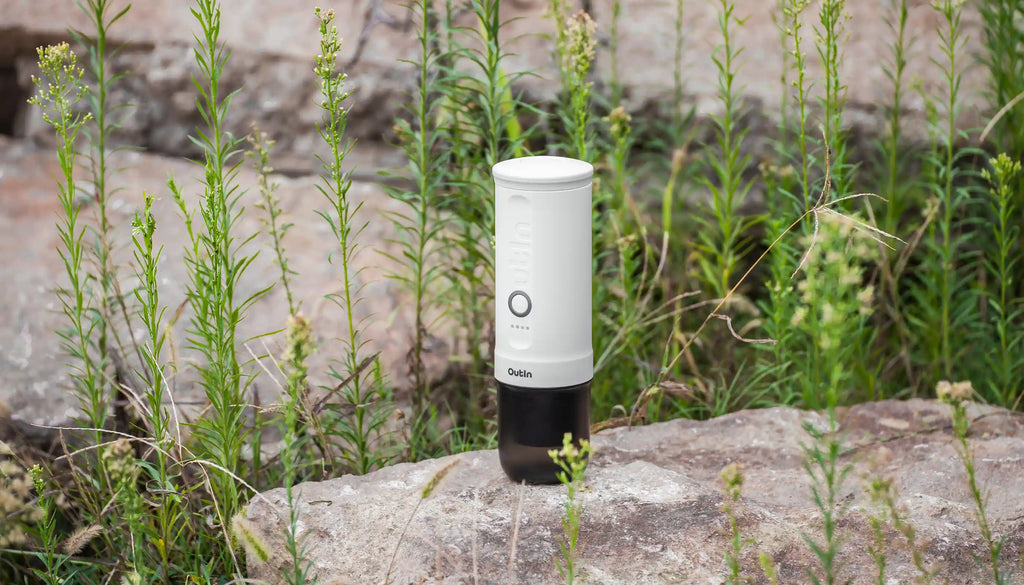Coffee lovers, unite! If you're anything like us, your day doesn't truly start until you've had your first cup of coffee. But have you ever wondered what makes your morning brew so delicious? The answer lies in the two most popular types of coffee beans: Arabica and Robusta. These beans may seem similar at first glance, but don't be fooled - they each bring their own unique flavor, aroma, and personality to the table. In this blog post, we'll take you on a journey through the world of Arabica and Robusta coffee, exploring their taste profiles, growing conditions, and more. So, grab a mug, settle in, and get ready to discover the differences between these two coffee powerhouses.

What is Arabica coffee bean?
Arabica coffee beans are the most widely consumed coffee variety in the world, accounting for over 60% of global coffee production. These beans are grown primarily in regions with higher altitudes and cooler climates, such as Colombia, Ethiopia, and Kenya. Arabica beans are known for their mild acidity, complex flavor profile, and subtle aromas. They produce a delicate and nuanced cup of coffee, with notes of chocolate, fruit, and even floral undertones. Arabica beans tend to be more expensive than other varieties due to their specific growing requirements and superior taste, making them a premium choice for coffee lovers who value quality and flavor.
What is Robusta coffee bean?
Robusta coffee beans are the second most widely cultivated coffee variety in the world, accounting for about 40% of global coffee production. These beans are primarily grown in regions with lower altitudes and warmer climates, such as Vietnam, Brazil, and Indonesia. Robusta beans are known for their strong, bitter taste and higher caffeine content compared to Arabica beans. They are often used in blends and instant coffee due to their lower cost and availability. While they may not be as highly valued as Arabica beans, Robusta beans have their own unique flavor profile and play an important role in the coffee industry.

What are the key differences between Arabica and Robusta?
Flavor profile: Arabica beans are widely known for their complex and delicate flavor profile, with subtle notes of chocolate, fruit, and even floral undertones. The mild acidity of Arabica beans results in a nuanced and pleasant cup of coffee. In contrast, Robusta beans are characterized by a strong, earthy flavor with a bitter aftertaste. Robusta beans are often used in espresso blends to provide a strong and bold flavor.
Growing conditions: Arabica beans are typically grown in regions with higher altitudes and cooler climates, such as Colombia, Ethiopia, and Kenya. They thrive in temperatures ranging from 15 to 24°C and require consistent rainfall and shade to grow properly. Robusta beans, on the other hand, are grown in regions with lower altitudes and warmer temperatures, such as Vietnam, Brazil, and Indonesia. They prefer temperatures ranging from 24 to 30°C and are less susceptible to pests and disease.
Caffeine content: Robusta beans contain about twice as much caffeine as Arabica beans, with an average of 2.7% caffeine content compared to Arabica's 1.5%. The higher caffeine content of Robusta beans contributes to their strong and bold flavor profile. However, the higher caffeine content also makes them less suitable for people who are sensitive to caffeine.
Price: Arabica beans tend to be more expensive than Robusta beans due to their specific growing requirements and superior taste. Arabica beans are often considered a premium coffee variety and command a higher price point in the market. Robusta beans, on the other hand, are more widely available and affordable, making them a popular choice for mass-market coffee products.
Sustainability: Both Arabica and Robusta beans can be produced sustainably with the right farming techniques and certifications. However, Arabica beans are generally considered to be more sustainable due to their higher quality and the fact that they are typically grown on smaller farms using more environmentally-friendly farming practices. Many coffee farmers and producers are now adopting sustainable farming practices to protect the environment and promote the well-being of local communities, which is exactly what OUTIN is doing, by supporting the Asociación Chajulense in a renovation project that can benefit coffee producers and their families.

In conclusion, the coffee industry is an important part of many people's daily lives, and taking measures to ensure its sustainability and environmental protection is crucial. Choosing sustainably grown coffee beans and environmentally friendly coffee makers, such as the Outin Nano portable coffee maker, is essential. Innovative products like Outin Nano can help reduce waste and energy consumption associated with traditional coffee brewing methods. As consumers, we have the power to make a difference by choosing sustainable coffee options and supporting environmentally responsible businesses, while protecting our planet's natural resources.


